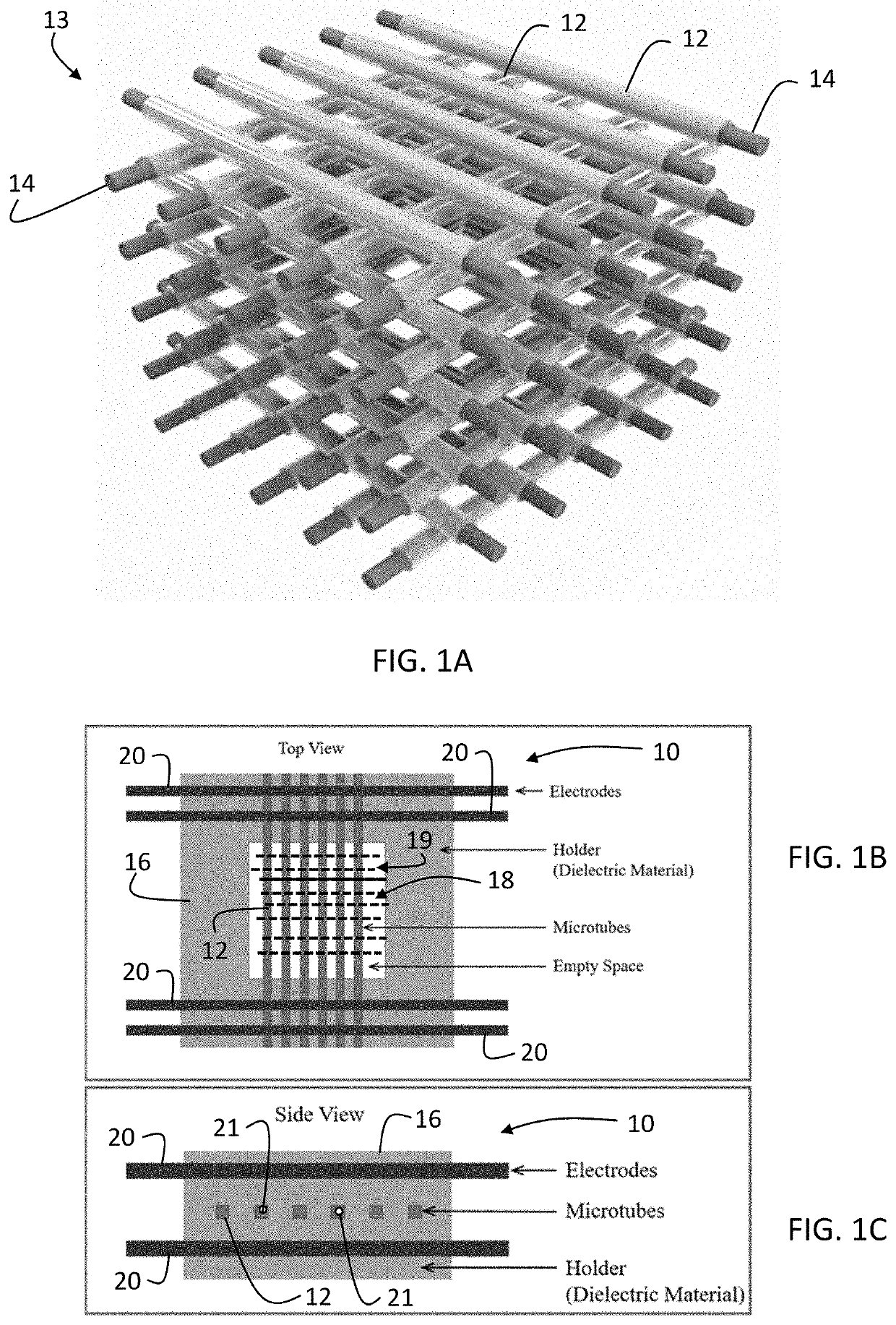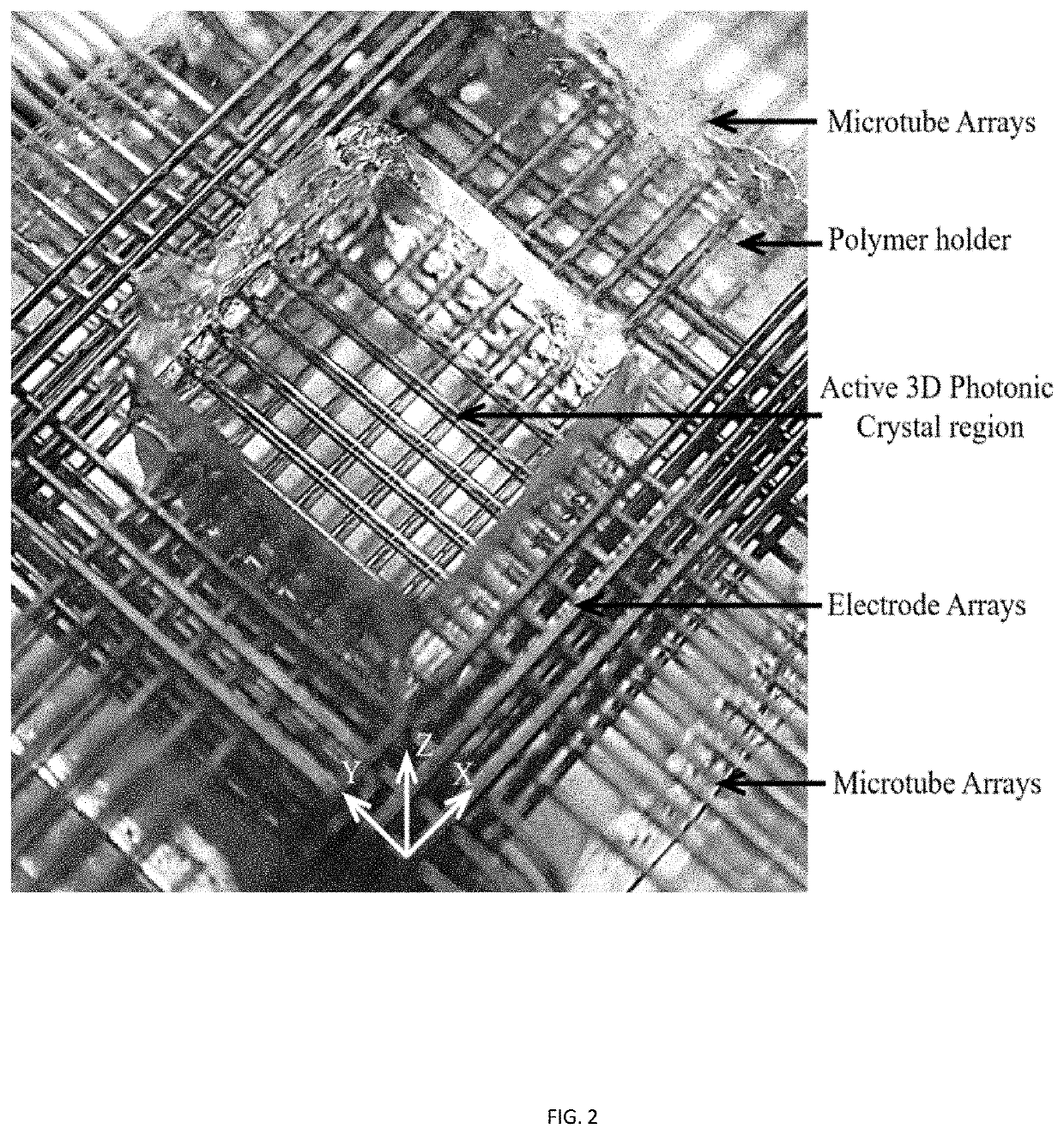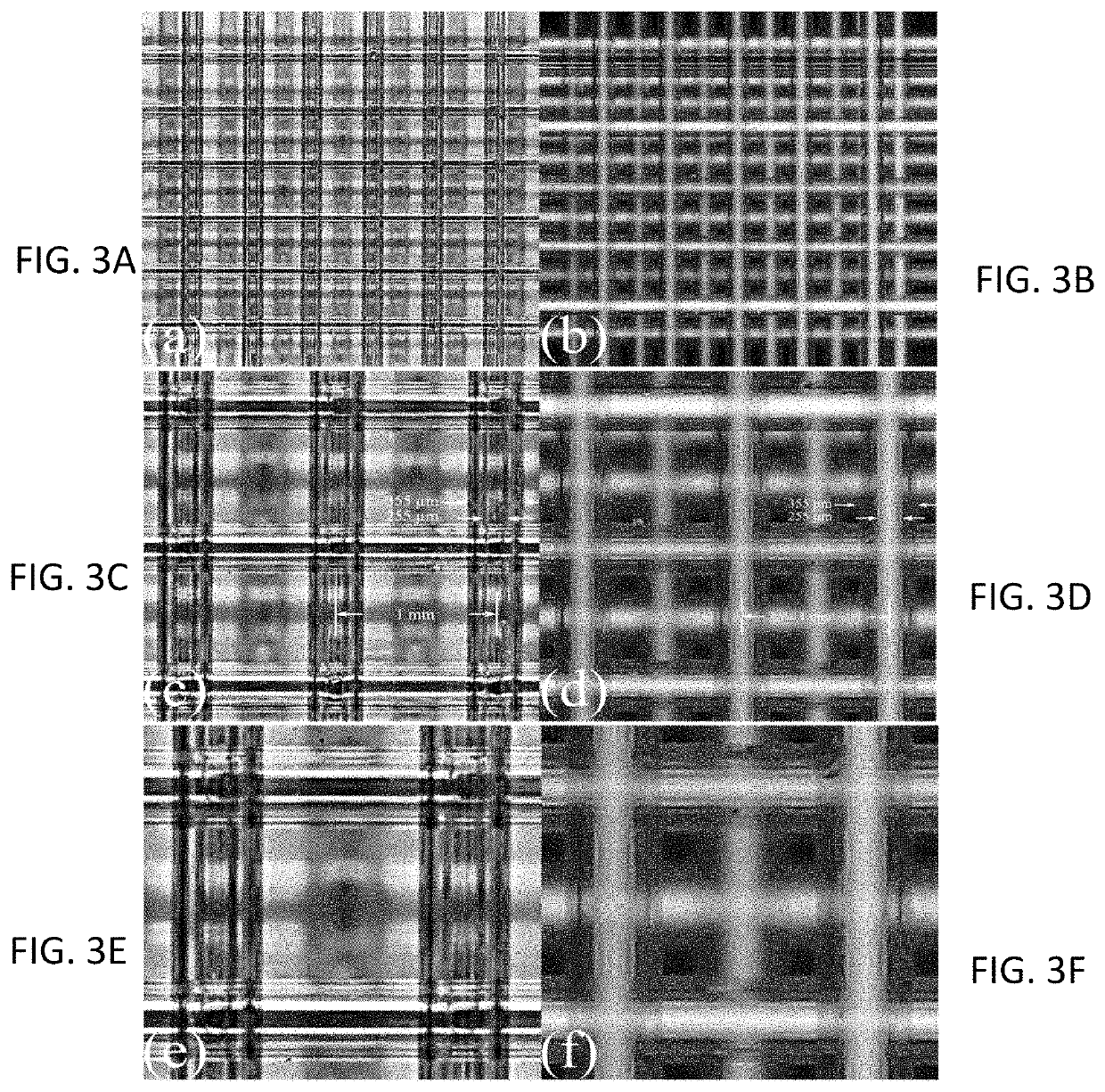Plasma photonic crystals with integrated plasmonic arrays in a microtubular frame
a technology of plasmonic arrays and crystals, applied in the field of electromagnetic devices, can solve the problems of including the transmission and reflection spectra, and the inability to quickly change the electromagnetic properties of the crystal with time, so as to achieve the effect of increasing or suppressing crystal resonan
- Summary
- Abstract
- Description
- Claims
- Application Information
AI Technical Summary
Benefits of technology
Problems solved by technology
Method used
Image
Examples
Embodiment Construction
[0024]Preferred embodiments provide a microplasma photonic crystal device that is capable of limiting insertion losses and incorporating electromagnetically-active materials or structures among the microplasmas in the periodic crystal structure of the device. Prototypes have been constructed that include complex, three-dimensional (3D) structures of free-standing arrays of polyimide microtubes. The microtubes are assembled into a 3D-printed polymer scaffold supported by a holder / mold situated around the perimeter of the scaffold, which results in structures that are dimensionally precise without distorting the diameter, or altering the position, of the individual microtubes. The elimination of the bulk polymer enclosure of U.S. Pat. No. 10,548,210 reduces the insertion loss of the crystal by tens of dB.
[0025]In a preferred embodiment, portions of the outer wall of the microtubes are partially coated, for example with a metal. The coating of the microtubes with specific metals such a...
PUM
| Property | Measurement | Unit |
|---|---|---|
| interior volume | aaaaa | aaaaa |
| interior volume | aaaaa | aaaaa |
| inner diameter | aaaaa | aaaaa |
Abstract
Description
Claims
Application Information
 Login to View More
Login to View More - R&D
- Intellectual Property
- Life Sciences
- Materials
- Tech Scout
- Unparalleled Data Quality
- Higher Quality Content
- 60% Fewer Hallucinations
Browse by: Latest US Patents, China's latest patents, Technical Efficacy Thesaurus, Application Domain, Technology Topic, Popular Technical Reports.
© 2025 PatSnap. All rights reserved.Legal|Privacy policy|Modern Slavery Act Transparency Statement|Sitemap|About US| Contact US: help@patsnap.com



